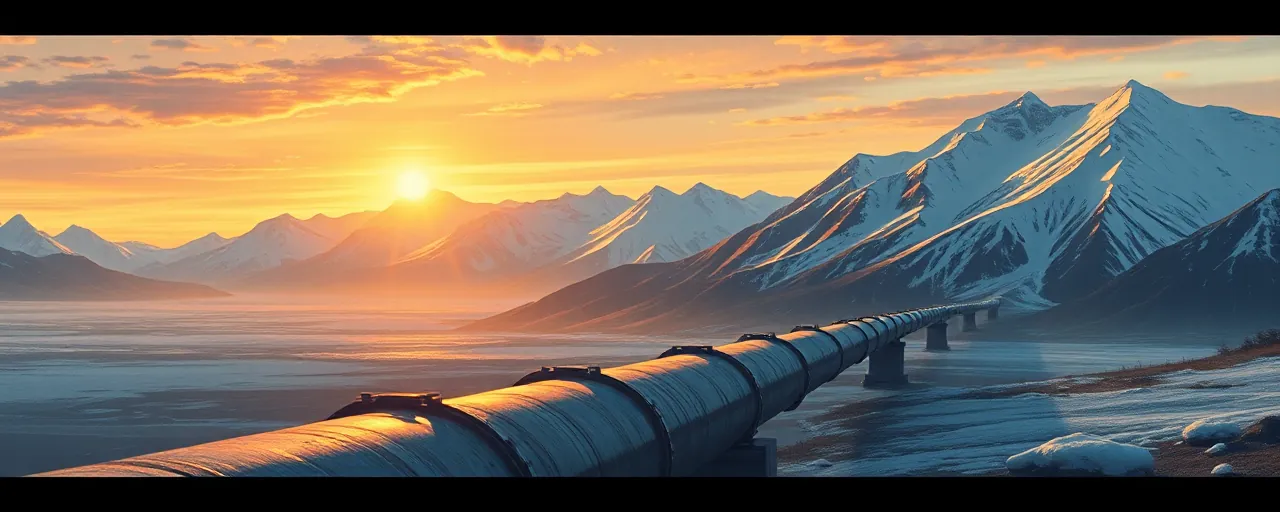A Bold Move in the Far North
Alaska’s vast, rugged landscape holds a promise of wealth beneath its icy surface, and the U.S. Department of the Interior is betting big on it. On March 20, 2025, Secretary Doug Burgum announced sweeping plans to expand oil and gas exploration across the state’s northern reaches, targeting the National Petroleum Reserve and the Arctic National Wildlife Refuge’s Coastal Plain. It’s a high-stakes play, one that could reshape energy markets and local economies alike, while stirring a hornet’s nest of environmental and cultural concerns.
The push aligns with President Donald Trump’s vision of American energy dominance, a strategy aiming to flex U.S. muscle in global markets through fossil fuel production. Burgum framed it as a long-overdue shift, arguing that federal restrictions have choked Alaska’s potential for too long. For a state where energy drives jobs and revenue, the announcement lands like a lifeline, but it’s not without its skeptics who see a different cost on the horizon.
Drilling Down on the Details
The Bureau of Land Management, under Burgum’s direction, plans to open up to 82% of the 23-million-acre National Petroleum Reserve for leasing, a move that could ramp up oil and gas output significantly. Meanwhile, the Coastal Plain, a 1.56-million-acre stretch within the Arctic National Wildlife Refuge, is set for a full leasing program, reversing years of limited access. These steps echo a 2017 congressional mandate to tap the region’s resources, though they come with assurances to safeguard wildlife and surface lands.
Beyond drilling, the Interior Department aims to clear hurdles for two major infrastructure projects: the Ambler Road and the Alaska LNG Pipeline. The former would link remote mineral deposits to transport networks, while the latter could funnel natural gas southward, potentially slashing energy costs for Alaskans. Revoking land withdrawals along the Trans-Alaska Pipeline Corridor is part of the package, handing control to the state and paving the way for construction. It’s a complex web of policy, promising economic jolts but raising tough questions about execution.
The Economic Upside and Its Limits
Proponents see dollar signs. The Alaska LNG Pipeline alone could spark $16 billion in economic activity during its first phase, creating over 2,200 construction jobs and driving down gas prices from $8.69 to $2.23 per million BTU. The Ambler Road, by unlocking copper and zinc deposits, might fuel a mining boom, adding thousands more jobs. For a state grappling with high energy costs and rural poverty, these projects offer a tangible boost, especially for communities long sidelined by geography.
Yet the optimism isn’t universal. Funding remains a sticking point; the LNG pipeline needs nearly $11 billion in private cash, and investors aren’t lining up amid doubts over long-term profits. Global energy markets are shifting too, with renewables gaining ground and fossil fuel demand facing an uncertain future. Alaska’s Governor Mike Dunleavy has long pushed for resource development, but even he acknowledges the tension between immediate gains and the bigger picture.
Environmental Stakes in a Warming Arctic
The Arctic isn’t just a resource vault; it’s a fragile ecosystem on the edge. Oil and gas operations here amplify climate change, pumping out emissions in a region warming four times faster than the planet’s average. Caribou herds, whales, and polar bears face disrupted migration routes, while oil spills loom as a nightmare scenario in waters too cold and remote for effective cleanup. Advocacy groups warn that locking in decades of fossil fuel use clashes with global climate goals.
Balancing act or not, the Interior Department insists it can protect these lands while drilling. Critics aren’t convinced, pointing to a history of environmental scars from projects like the Trans-Alaska Pipeline. Indigenous communities, who rely on these ecosystems for hunting and fishing, feel the squeeze most acutely. Their voices, often drowned out in policy debates, highlight a trade-off that’s anything but abstract.
A Tug-of-War Over Land and Legacy
Alaska’s land has been a battleground for decades. The 1971 Alaska Native Claims Settlement Act tried to settle ownership disputes, but tensions linger between federal control, state ambitions, and Indigenous rights. Burgum’s plan to hand land back to Alaska reignites old fights; supporters say it honors statehood promises, while opponents argue it sidesteps Native claims and environmental safeguards. Legal challenges are already brewing, with echoes of past lawsuits like Alaska v. Udall.
On the flip side, energy development has brought real benefits to some Indigenous groups. The North Slope Borough, fueled by oil cash since the 1970s, built schools and preserved traditions. Yet for many, the cost hits harder, disrupting subsistence lifestyles tied to fish and game. It’s a messy divide, one that pits economic survival against cultural roots in a state where both matter deeply.
What Lies Ahead
Alaska’s energy gamble is rolling forward, backed by executive orders and a clear political will. The Interior Department’s actions signal a pivot to extraction over preservation, betting that oil, gas, and minerals can power a new chapter for the state and the nation. Jobs, cheaper energy, and a stronger U.S. foothold in global markets hang in the balance, but so do the Arctic’s wild spaces and the people who call them home.
The debate won’t quiet anytime soon. As drilling rigs rise and pipelines stretch, the world will watch how this plays out, not just for Alaska but for a planet wrestling with energy needs and a warming climate. It’s a choice that feels immediate yet echoes far beyond the tundra, a test of where ambition meets its limits.
